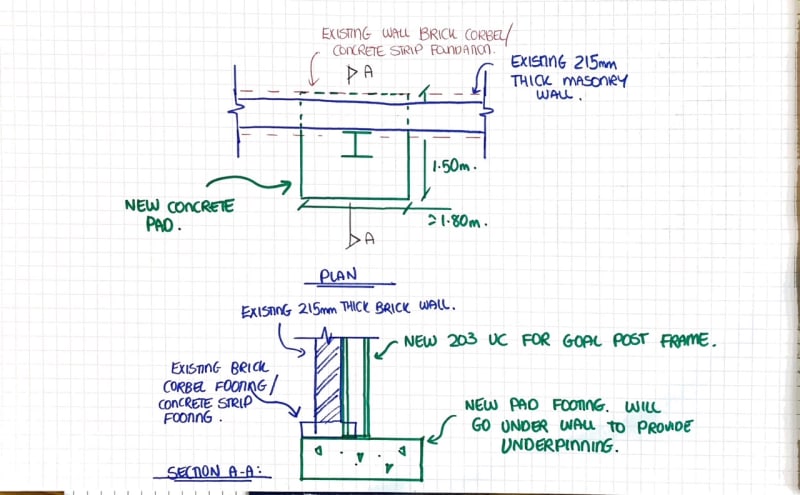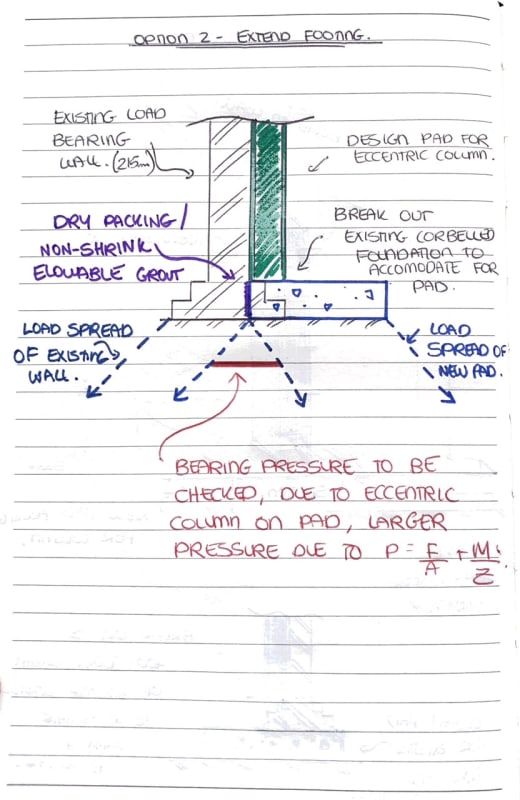liam1369
Structural
- Nov 13, 2014
- 73
Hi All,
I am looking for some general advice in relation to the new foundations for a column which forms part of a new goal post frame allowing for an opening.
I believe we will need to underpin the existing wall as the new column pad will go below. Please see image below.
Does anyone have any advice for this detail and whether other elements or factors need to be considered?

I am looking for some general advice in relation to the new foundations for a column which forms part of a new goal post frame allowing for an opening.
I believe we will need to underpin the existing wall as the new column pad will go below. Please see image below.
Does anyone have any advice for this detail and whether other elements or factors need to be considered?





![[lol] [lol] [lol]](/data/assets/smilies/lol.gif) ). It's quite easy: bring in a hand auger and rip some 16" or so caissons side by side to support the footing on. Have bar in the footing span from caisson to caisson.
). It's quite easy: bring in a hand auger and rip some 16" or so caissons side by side to support the footing on. Have bar in the footing span from caisson to caisson.
![[smile] [smile] [smile]](/data/assets/smilies/smile.gif) .
.